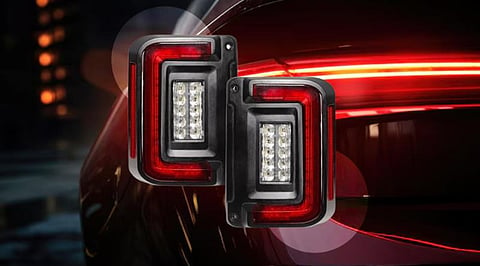

There is a new dawn on the automotive aftermarket sector, and tail lights have become one of the most progressive even creative areas. The basic brake and turn indicator has transformed to powerful communication systems that produce a combination of safety, beauty, and state of art technology. By 2025, tail lights used aftermarket are not only changing and evolving to be a part of the basic lighting systems, but also will become the intelligent addition to the set of accessories in the car that will not only provide a higher level of safety, but also offer new possibilities in connection and individualization. The information below will tell you all you need to know about the best aftermarket tail light assembly that you need to buy in 2025, with a look at the type of tail light assemblies, essential features, legal concerns, and reputable brands.
The traditional tail light had three main uses, to signal that a vehicle was braking, turning, and reversing. Nevertheless, modern tail lights have become multi-purpose gadgets acting as the communication point of contact among vehicles, drivers, and even intelligent infrastructure. Being highly sophisticated, such systems may illustrate complicated information, adjust to the conditions presented in the environment, and connect to many systems onboard to bring more security and comfort.
The advanced tail light systems mainly depend on underlying lighting technologies. Both technologies have the distinct benefits and capabilities supporting various features and performance values.
LED, OLED, and Laser are the main categories of tail light assembly that take over the market. LED technology is still taking over the tail lights market on the aftermarket because of its reliability, energy-saving and cost effectiveness. Contemporary LED devices provide very high brightness levels, very fast response, and the ability to form intricate arrays which allow some elaborate lighting schemes. Sophisticated LED controllers allow individual LEDs to be controlled so that smooth gradients and dynamic effects impossible before can be achieved.
OLED is finding use in premium aftermarket display. This type of organic light-emitting diode offers even light across greater areas such that tail lights become display screens. OLED tail lights can display text, symbols, or even basic graphics that creates new opportunities to communicate and personalize their vehicles.
Although laser technology is still developing, it provides the most light and provides the most accurate light pattern. The laser-powered tail-light can light up intricate designs on the roads that could convey more safety details to the lead cars. Nevertheless, the existing laser systems are rather complicated and demand elaborate control procedure and compliance with regulations, which makes the application of laser rather hard.
The ability to add features related to connectivity to the tail lights has changed the concept of tail lights as a passive lighting system to an active system to facilitate communication. These integrated systems provide their owners with new possibilities of control and vehicle customization.
The advanced tail light systems are managed with smartphone applications as the main interface. Users can adjust the lighting patterns and control the brightness as well as setting auto-behavior during the day of use via their mobile phones through these apps. High-level customization involves petitioning user-specific sequential displays, arranging diverse lighting displays according to different driving conditions and even programming productions to several vehicles, to disjointedly perform.
Advanced tail light systems may be made to connect to the popular smart home devices, and coordinated lighting effects may be created that affect more than just the car. The tail lights can be used to input a control signal to turn on home exterior lighting as a vehicle drives toward the driveway to provide a welcome and safer environment.
Machine learning features of AI systems can be used to determine personal driving habits and automatically switch tail lights to reflect the most likely use cases. Such systems consider the issues like most used driving routes, time of day preferences, common traffic conditions to maximize the lighting performance.
Emergency signalizing systems have the property of auto-initiation by the vehicle sensors in the case of the identification of accident conditions or other situations considered to be emergencies. These systems are able to sync with airbag deployment sensors, ABS activation or other emergency sensors to indicate immediately hazardous conditions to the surrounding traffic.
Smart emergency sequences have the luxury of relaying certain data regarding the kind of emergency that has happened. Other patterns may show system failure and medical emergence or accident cases to enable the other drivers and emergency services to take necessary actions.
